Hurricane Juan vs. Dorian vs. Fiona: How the storms compare
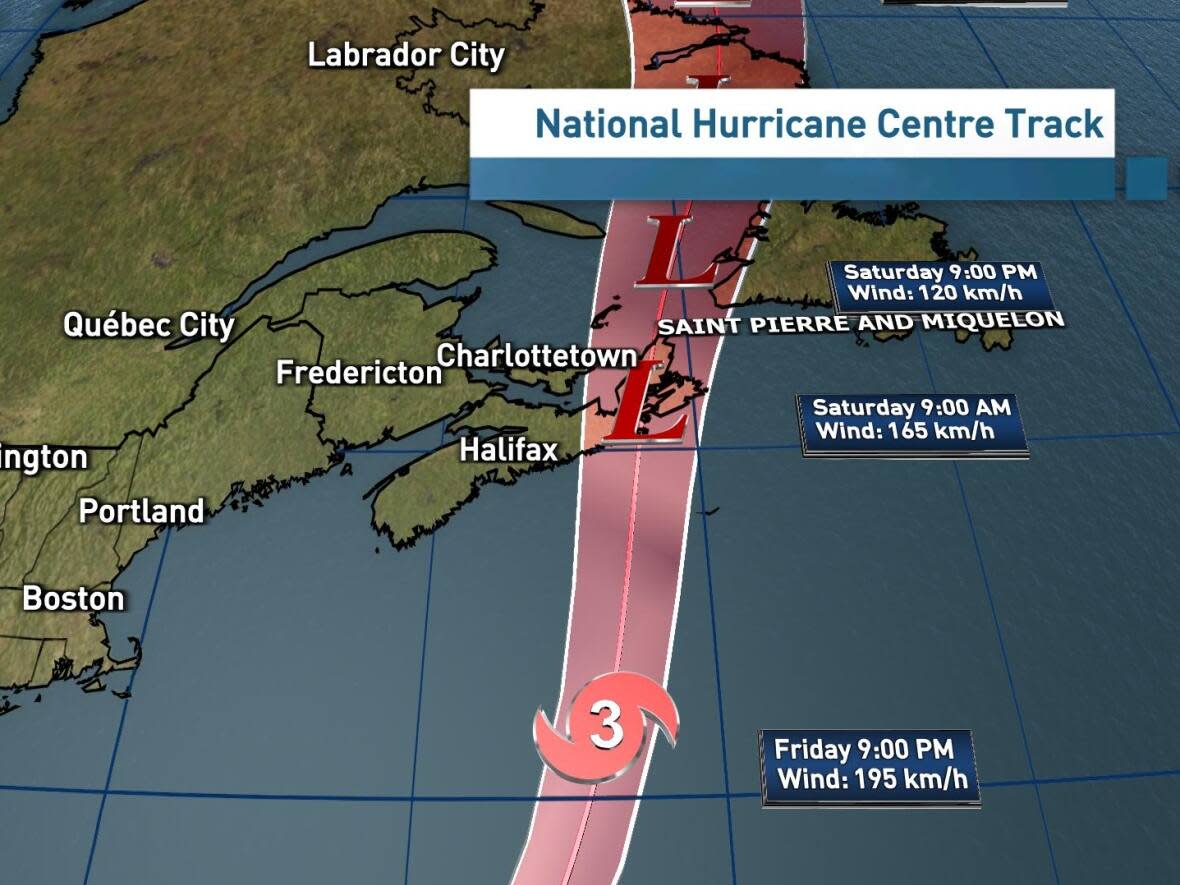
Ahead of Hurricane Fiona's landfall, residents are wondering how this storm could compare to two other big weather events in Nova Scotia's history: Hurricane Juan in 2003 and Hurricane Dorian in 2019.
Bob Robichaud, a warning preparedness meteorologist with Environment Canada, said in a briefing Thursday that Hurricane Fiona is an "extremely strong and dangerous storm."
"Will it be as strong as [Hurricane] Juan when Juan made landfall in 2003 where there were some extreme winds, but they were concentrated over a small area?" he said. "This storm is going to be bigger in size compared to what Juan was, but maybe a little stronger than what we saw with Dorian."
Hurricane Juan
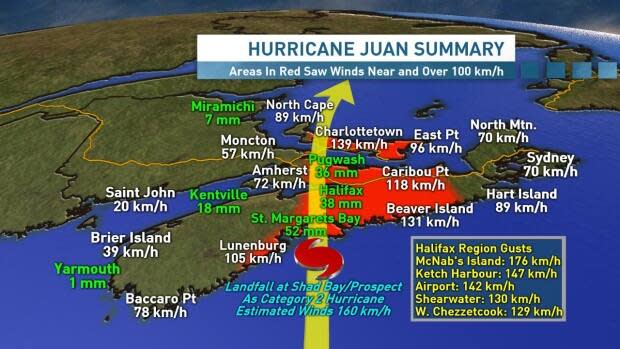
In late September 2003, Juan hit Nova Scotia's shores at Shad Bay as a Category 2 hurricane. Some parts of the province saw wind speeds over 130 km/h.
On McNab's Island at the entrance to Halifax harbour, winds hit 176 km/h during the storm.
St. Margarets Bay saw the bulk of the rainfall, with over 50 millimetres of precipitation as the storm rushed over central Nova Scotia.
CBC News coverage from the storm described Juan as a "violent hurricane" that snapped power poles and caused huge storm surges.
Hurricane Dorian
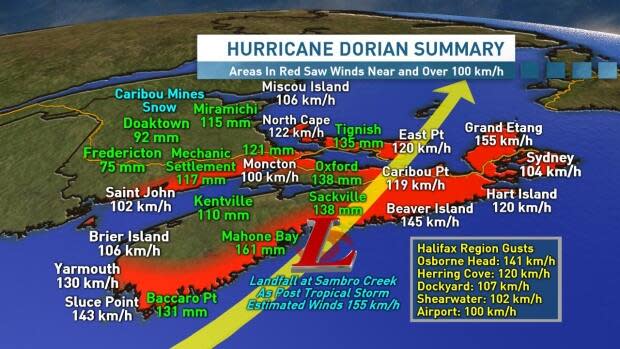
Nova Scotia Power says Hurricane Dorian was by far the most damaging storm the utility ever dealt with — a title that was once held by Juan.
Dorian was larger overall, making landfall as a post-tropical storm south of Halifax at Sambro Creek with winds at 155 km/h, but causing wind gusts of about 100 km/h across most of Nova Scotia.
That storm largely tracked diagonally over central Nova Scotia and dropped nearly 140 millimetres of rain in some areas of the province.
Hurricane Fiona
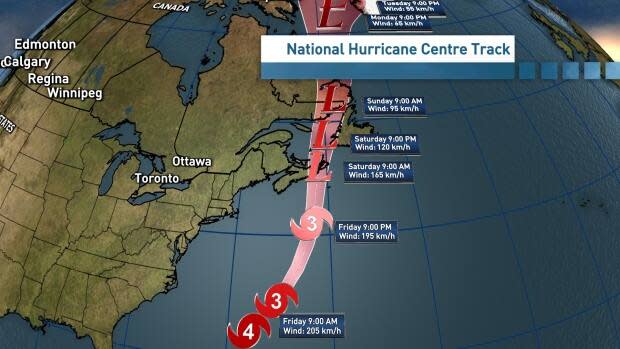
Like Dorian, experts say Fiona will hit eastern Nova Scotia as a powerful post-tropical storm.
It's expected to track over eastern mainland Nova Scotia and Cape Breton.
Robichaud said during a briefing Friday afternoon the province can expect anywhere between 100 millimetres and 150 millimetres of rainfall, though some areas could see more.
Robichaud also said the storm might linger over Nova Scotia longer than previous weather events.
By 9 a.m. local time on Saturday, Fiona's winds are expected to reach 165 km/h.
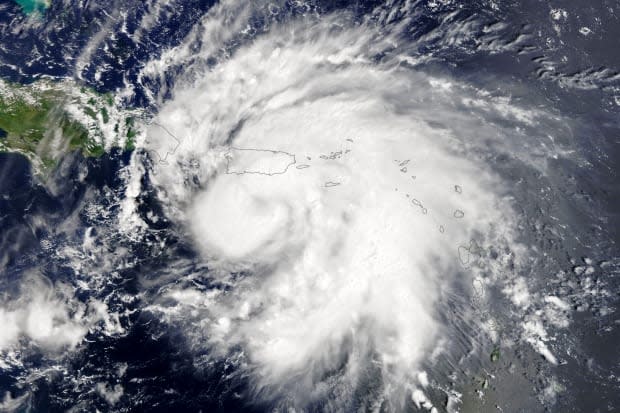
MORE TOP STORIES


